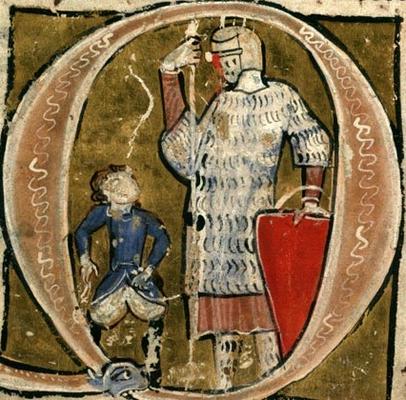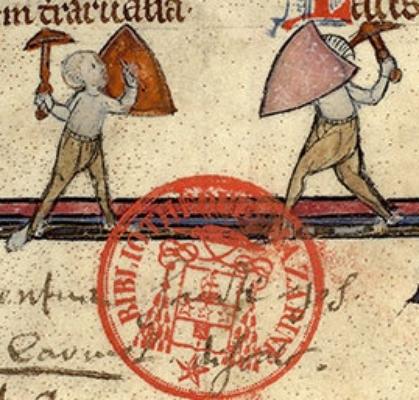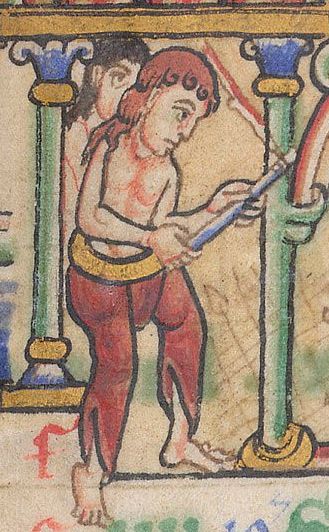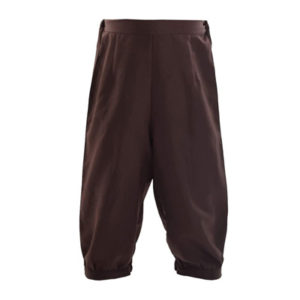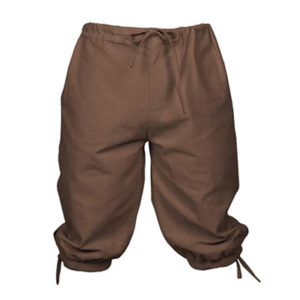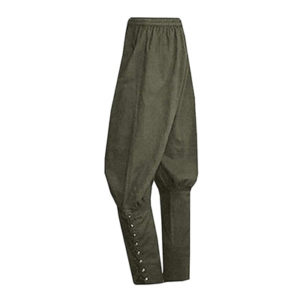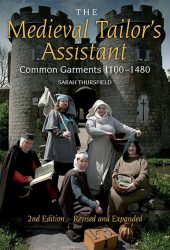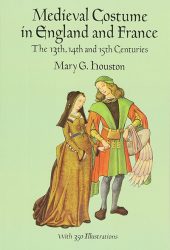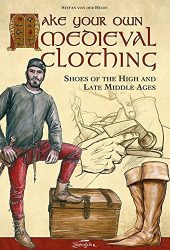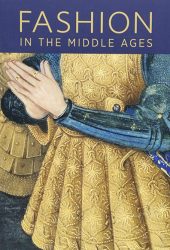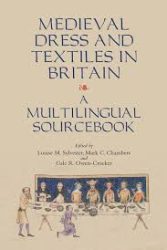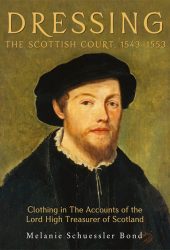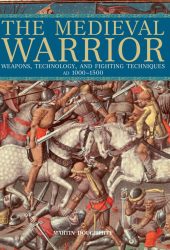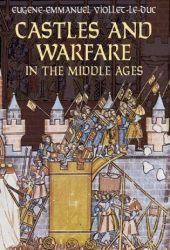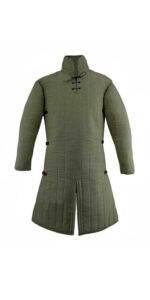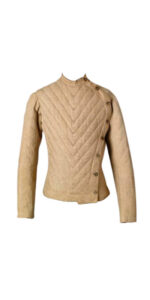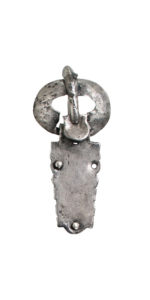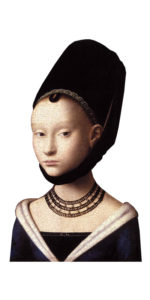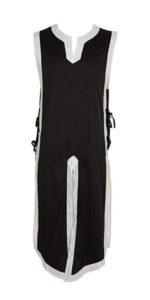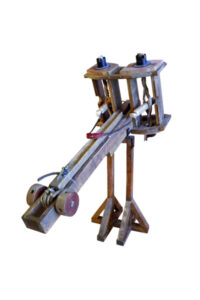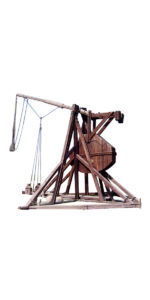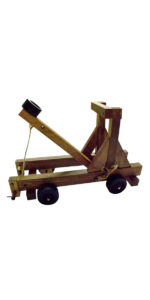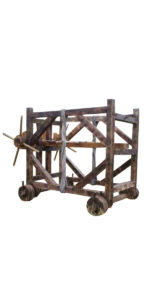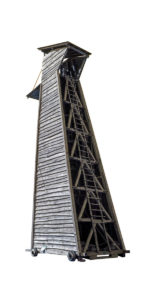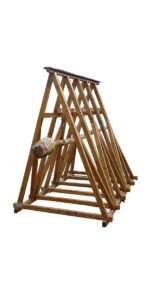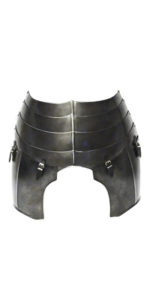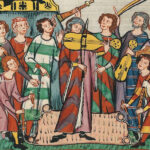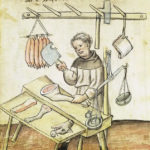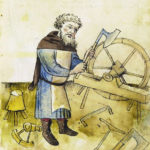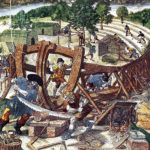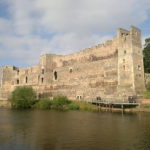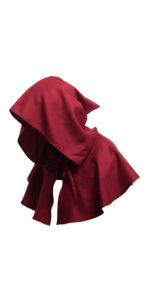Medieval trousers or hose were traditionally worn under a short tunic or with a small cloak and were usually ankle length.
Hose were typically made of two separate pieces, one for each leg, and were worn from the waist down to the feet. If they were loose, the excess material was bunched around the waist and “hung in folds around the legs.” Garters or leggings are sometimes accompanied by narrow trousers.
Pieces of fabric were attached to the trousers to form belt loops to hold the piece in place, at the waist, by a belt.
The historical root of the word trousers comes from the Scottish word trews. Trousers and hose of various designs were worn throughout the Middle Ages in Europe, especially by men.
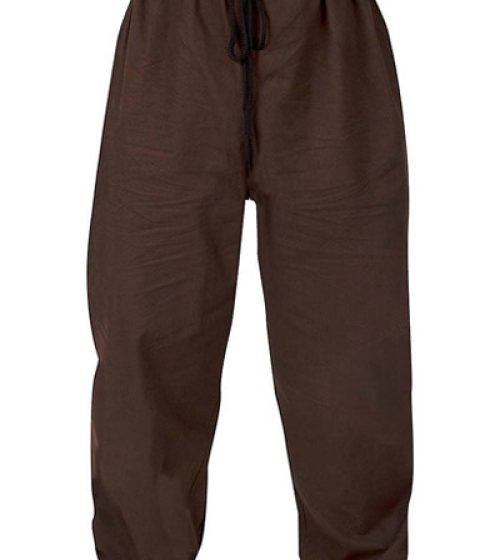
History of the Hose or Medieval Trousers
There is some evidence of trousers being worn in the Upper Paleolithic. Still, they probably originated in Central Asia, worn from the waist to the ankles and covering both legs separately (as opposed to robes, skirts, and dresses). Woolen trousers have been found in Turpan, western China, dating from the 13th and the 10th century BC and likely made for horseback riding.
Trousers entered recorded history in the 6th century BC, on the rock carvings and artworks of Persepolis. Romans disdained trousers as barbarians’ mark (although they later began using them in the north as they provided greater warmth).
In the Middle Ages, trousers were worn under long tunics. Trousers in this period varied in length and were often closed at the cuff or even had attached foot coverings. Among upper-class males, by the 8th century, there is evidence of the wearing in Europe of two layers of trousers.
During the later medieval period, a style called “joined hose” became popular. Joined hose were a single garment that covered both legs and were often made in contrasting colours or fabrics. They were made by sewing together separate leg coverings, creating a fitted garment from the waist to the ankle. Joined hose were worn with a codpiece, a fabric panel attached to the front, to provide additional coverage.
Types of Hose or Trousers
Hose were an essential part of a man’s wardrobe during the Middle Ages and were worn by individuals from all social classes. They served both practical and fashionable purposes, providing warmth and protection for the legs while also displaying the wearer’s sense of style and social status.
Medieval clothing terminologies can be a bit nuanced, and the specific terms used can vary across regions and time periods. However, trousers of this era can be classified flexibly into the following.
Brais
Brais (also spelt “braies” or “braccae“): Worn in the early Middle Ages, brais varied in length and were often closed at the cuff.
They were essentially trousers or leg coverings made of linen or other lightweight fabrics.
Brais typically extended from the waist down to the mid-calf or ankle. They were often tied or secured with a drawstring at the waist and sometimes had leg bands or ties at the calf.
Drawers
Drawers were under-layer trousers worn by upper-class males in the late 16th century.
Drawers were similar to brais in function but tended to refer to undergarments worn by women. They were loose-fitting and covered the legs, typically reaching down to the ankles. Drawers were usually made of linen or other soft fabrics and were worn beneath a woman’s outer garments, such as dresses or skirts.
Breeches
Breeches were trousers made of wool or linen and worn over drawers, common in the 10th century. They were close-fitting trousers that extended from the waist to varying lengths, such as mid-thigh, knee, or calf.
Breeches could be made of various materials, including wool or linen. They were often fastened with buttons or ties at the waist and had a snug fit around the hips and thighs. Breeches were typically worn by the upper classes or those engaged in activities that required freedom of movement, such as riding or hunting
Tights or Hose
Hose were leg coverings worn by men that evolved over time and had different styles.
Initially, hose referred to separate leg coverings, such as chausses, worn with a footed hose or ankle-length stockings. In later medieval fashion, hose referred to the fitted leg coverings that extended from the waist down to the ankle.
Medieval hose were typically made of silk or other fine fabrics and were often attached to the doublet or tunic with points or laces. Hose could be decorated with embroidery and were an important element of a man’s fashionable attire.
Image Gallery: Trousers in Medieval Manuscripts & Art
